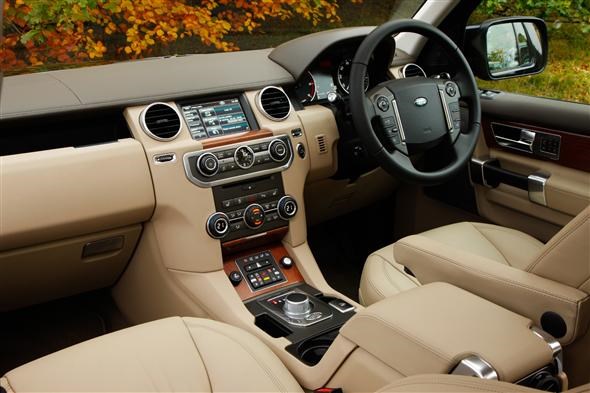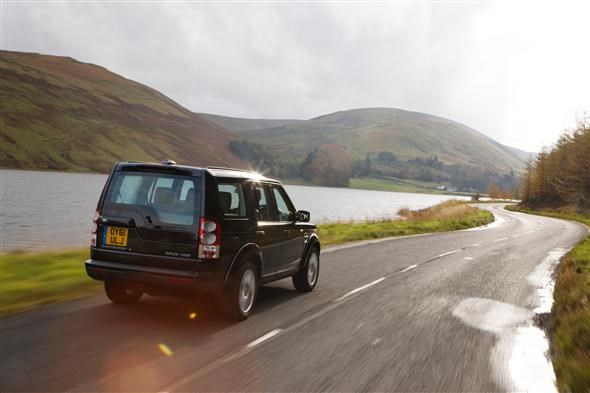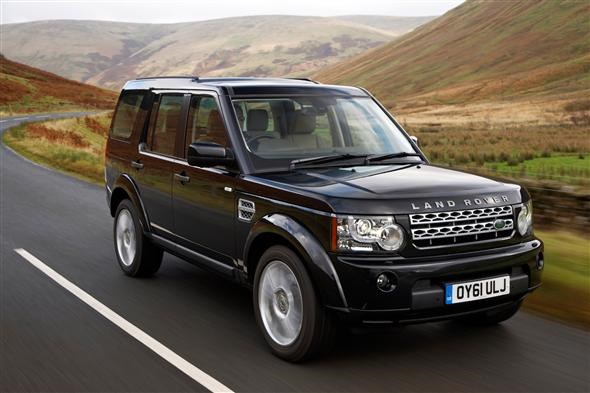The face-lifted Discovery must be one of the most attractive cars around for user-choosers. Not only is it brilliant off-road, it is also comfortable and remarkably refined when on the black stuff.
The treat for Land Rover fans is that the 2012 model year Discovery has more power, lower CO2 emissions and a new eight-speed gearbox. It really is a better proposition and will certainly be on the user chooser list for executives.
Rivals include the VW Touareg, Toyota’s Land cruiser and the Mercedes-Benz M-Class – making the sector very competitive – however the Discovery is a cracking car and for many is the default option thanks to its prowess on both road and dirt.
So is the Discovery a smart choice when crunching those all-important numbers?
On test we drove the 3.0-litre V6 with a power output of 252bhp. Even though power is up by 10bhp on the previous model emissions have been reduced from 244g/km to 230g/km of CO2. This places the 2012 model year Discovery in a BIK band of 35 per cent.
However, choose a Touareg 3.0 V6 TDI SE (240bhp) 5d Tip Auto and it emits 195g/km of CO2, placing it in a BIK band of 32 per cent. The Land Cruiser 3.0 D-4D LC4 (190bhp) 5d Auto is also greener than the Discovery emitting 213g/km of CO2, although because of the way the tax bands are set you’re still in for company car tax at 35 per cent. However, the Discovery has more power than either of these rivals. Important if you are wanting to use the vehicle for towing.
BIK figures are competitive. For a 40 per cent tax payer the Discovery costs £587 per month. The VW Touareg is cheaper at £410 per month and the Toyota Land Cruiser is also less expensive than the Discovery at £511 per month.
Even with the new eight-speed gearbox the Toyota Land Cruiser (34mpg) and the VW Touareg (38mpg) are both more frugal than the Discovery, which should average 32.1mpg.
If you are only looking at the spreadsheet then the Discovery may not woo you – however, this is the complete package. This car is brilliant on- and off-road.
It is reasonably good to drive. There have been many improvements over the previous generation – the steering feel at low and high speed feels much weightier and gives the driver more confidence when cornering. It seems to roll less on twisty B-roads too, making it much easier and more fun to drive.
The new eight-speed automatic gearbox (fitted with paddle shifters) makes the Discovery a joy to drive. The car feels nimble and the auto ‘box is eager to shift into top gear to conserve fuel when at a constant speed.
Jump inside and you’ll be pleased to find that the Discovery has retained its luxury, refined feel. Engine, wind and road roar are minimal. Up front the seats give the driver and passenger good bolstering although the sides could do with a little more support. Interior space is exceptional and seven-seat versions of the Discovery can seat seven adults in comfort. A rare feat, even for people carriers.
On figures alone you couldn’t choose the Discovery, but this car offers so much more than its vital statistics suggest. Difficult off-road obstacles can be negotiated with ease and the new car is even better to drive on-road than its predecessor. If you can afford it then the Discovery has to be the default choice in this sector of the market. The car we tested has a starting price of £51,195, and a P11d value of £50,350.


Also consider
On the road it’s more refined with better poise in corners while the steering is more precise, yet it’s still relaxing at cruising speeds.
It drives well – both on and off-road – the whole package oozes subtle sophistication. There are some cracking engines too.
The Land Cruiser sticks to its traditional roots – a vehicle that has the ability to go pretty much anywhere. On difficult terrain it’s hugely impressive.
Just so you know, we may receive a commission or other compensation from the links on this website - read why you should trust us.




